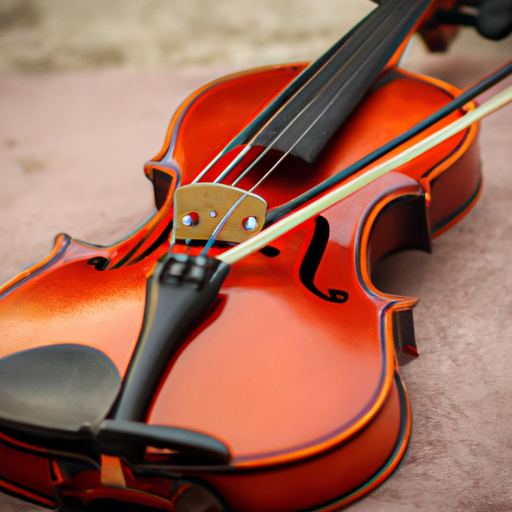
Violin is a beautiful instrument that has been popular for centuries. Choosing the right violin can be a daunting task, especially if you are a beginner. In this article, we will guide you through the process of choosing a violin that suits your needs.

The violin is a stringed musical instrument that originated in Italy in the 16th century. It is a part of the violin family that also includes viola, cello, and double bass. The violin is widely used in classical music, folk music, and many other genres.

There are many types of violins available in the market, from student violins to professional ones. The purpose of the violin can vary from playing in an orchestra to playing solo.
A violin consists of different parts, and understanding each part is crucial for choosing the right violin. The main parts of a violin are the body, the neck, the scroll, the fingerboard, the bridge, the strings, and the bow.
Choosing the right size violin is essential to ensure comfort while playing. Violins come in different sizes ranging from 1/16 to 4/4. The size of the violin depends on the age, arm length, and height of the player.
When choosing a violin, sound quality, tone, and acoustics are crucial factors to consider. The sound quality of a violin depends on the body, wood, and craftsmanship. The tone of the violin can vary from bright to warm, and choosing the right tone is a matter of personal preference. The acoustics of the violin determine how the sound is projected.
Choosing the right bow for your violin is as important as choosing the right violin. The bow is responsible for producing the sound, and the material, weight, and balance of the bow can affect the sound quality.
Choosing the right strings for your violin is crucial for producing the desired tone. The material, thickness, and tension of the strings can affect the sound quality.
A good violin case is essential for protecting your instrument from damage. When choosing a violin case, consider the material, size, and protection features. A sturdy case with proper padding can prevent damage from accidental bumps or drops.
Rosin is a sticky substance that is applied to the bow hair to produce friction and produce sound. Choosing the right rosin can affect the sound quality and playability of the violin.
When purchasing a violin, consider the price range, quality, and where to buy. It is important to do your research and buy from a reputable dealer. Consider renting a violin before buying to ensure that the instrument suits your needs.
Proper care and maintenance of your violin are essential for protecting your investment. Keep your instrument clean and dry and store it in a safe place. Regularly check for any damages and get them repaired by a professional.
Choosing the right violin is a personal decision, and it can be overwhelming. With the right information and guidance, you can choose a violin that suits your needs and preferences. We hope this guide has been helpful in your quest for the perfect violin.
If you are interested in renting or purchasing a violin, please visit https://bannhacflamenco.net/cho-thue-ban-nhac/luom-lat-tin-do-day/ for more information.